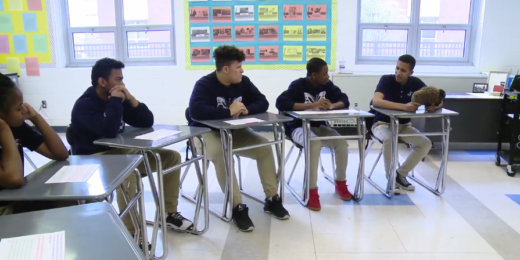Students are often attuned to current events and world affairs. Debating topics relevant to the news can be a high-interest way to engage English language learners in academic discourse that matters to them while building language skills. Structured debate also gives students opportunities to disagree politely without attacking individuals for their opinions -- a useful life skill.
"Our theme for this whole year is leadership," said Matt Clements, a ninth-grade teacher in the ENLACE Academy at Lawrence High School in Massachusetts. "So as students learn the listening, the reading, the writing and the speaking skills well enough, they transition into my leadership class where they can put all those skills together."


